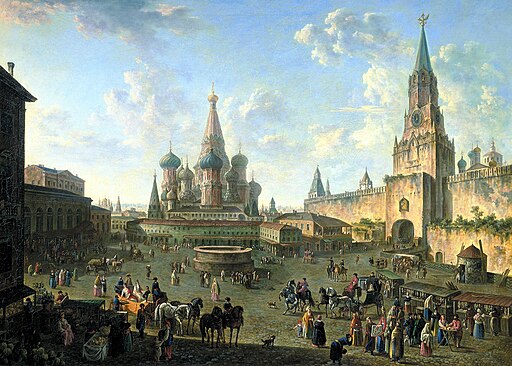
“Capriccio: Ruins and Classic Buildings” by Canaletto depicts an architectural fantasy, placing together buildings, archaeological ruins, and other structural elements in fictional combinations.
In this painting, Canaletto drew on his studies of identifiable sites and buildings but combined them in an imaginative form to create a poetic image.
In this inventive capriccio, Canaletto brought together different architectural elements of ruins and classical buildings from Rome and Padua.
Many different versions of such compositions were produced, by various artists, indicating an eager market for works of this type.
They were inspired by the classical landscapes of the seventeenth century. Their appeal increased with the growing interest in antiquarianism, archaeology, and the history of things of the past.
Capriccio in Art
Capriccio paintings can be anything from re-imagining a building into the future as ruins or placing structures in entirely different settings from reality.
The subjects of capriccio paintings cannot be taken as an accurate depiction due to the genre’s fantastic nature. Capriccio falls under the broad genre of landscape painting.
This style of painting was introduced in the Renaissance and continued into the Baroque. This artistic freedom in capriccio paintings allows for the transformation of buildings and compositions.
Some artists took elements that didn’t belong in the original inspiration, such as people, animals, or plants, and incorporated them into the work.
It is important to remember that in the realm of Capriccio, a painting of a building is not one of record or history, but that it is a creative artwork.
Explore Capriccio Paintings
- “The Aegean Sea” by Frederic Edwin Church
- “Dido Building Carthage” by J. M. W. Turner
- “Capriccio: Ruins and Classic Buildings” by Canaletto
Canaletto
Giovanni Antonio Canal (1697 – 1768), better known as Canaletto, who was born in Venice, is famous for his paintings of Venice, Rome, and London.
He was also a printmaker using the etching technique. From 1746 to 1756, he worked in England, where he painted the many sights of London.
He was highly successful in England, thanks to a British merchant, whose extensive collection of Canaletto’s works was sold to King George III in 1762, which significantly increased Canaletto’s prestige.
Capriccio: Ruins and Classic Buildings
- Title: Capriccio: Ruins and Classic Buildings
- Artist: Canaletto
- Year: 1730s
- Medium: Oil on canvas
- Dimensions Height: 87.5 cm (34.4 ″); Width: 120.5 cm (47.4 ″)
- Museum: Museo Poldi Pezzoli
Canaletto
- Artist: Giovanni Antonio Canal (Canaletto)
- Born: 1697 – Venice, Republic of Venice
- Died: 1768 (aged 70) – Venice, the Republic of Venice (now Italy)
- Nationality: Venetian
- Notable works:
- Bucentaur’s return to the pier by the Palazzo Ducale
- The Grand Canal in Venice
- The Entrance to the Grand Canal, Venice
- Piazza San Marco with the Basilica, Venice
- Santa Maria della Salute in Venedig vom Canal Grande
- A Regatta on the Grand Canal
- Prà della Valle in Padua
- “Capriccio: Ruins and Classic Buildings” by Canaletto
Famous Canaletto Paintings
Explore the Museo Poldi Pezzoli
- “Portrait of a Girl” by Piero del Pollaiolo
- “Prà della Valle in Padua” by Canaletto
- “Capriccio: Ruins and Classic Buildings” by Canaletto
Explore Museums in Milan
- Santa Maria Delle Grazie
- Sforza Castle Museums
- Brera Art Gallery, Pinacoteca di Brera
- Museo Poldi Pezzoli
Explore Museums in Bologna
- The Archaeological Civic Museum (MCA) of Bologna
- Sanctuary of Santa Maria della Vita
Canaletto’s paintings
~~~
“Men freely believe that which they desire.”
– Julius Caesar
~~~
Photo Credits: 1) Canaletto [Public domain]
Popular this Week








 Sponsor your Favorite Page
Sponsor your Favorite Page SEARCH Search for: Search Follow UsJoin – The JOM Membership Program
Sponsor a Masterpiece with YOUR NAME CHOICE for $5
Share this:
- Tweet
